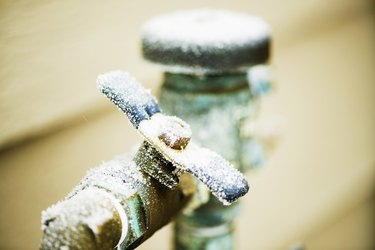Tips to Maintain Your Pipes from Freezing Damage: Important Guidance
Tips to Maintain Your Pipes from Freezing Damage: Important Guidance
Blog Article
Almost everyone maintains their personal idea on the subject of Preventing and dealing with frozen pipes.

Winter can damage your pipes, especially by freezing pipes. Here's how to stop it from happening and what to do if it does.
Intro
As temperature levels decrease, the danger of frozen pipelines boosts, potentially leading to pricey repair services and water damage. Recognizing just how to avoid frozen pipelines is important for homeowners in cool climates.
Recognizing Frozen Pipelines
What triggers pipelines to freeze?
Pipes ice up when exposed to temperature levels listed below 32 ° F (0 ° C) for expanded durations. As water inside the pipelines freezes, it increases, putting pressure on the pipeline walls and potentially creating them to break.
Risks and damages
Frozen pipelines can cause water supply interruptions, home damages, and costly repair services. Burst pipelines can flooding homes and trigger substantial structural damage.
Signs of Frozen Pipes
Determining icy pipes early can stop them from bursting.
Exactly how to recognize frozen pipes
Try to find reduced water flow from faucets, unusual odors or sounds from pipes, and visible frost on subjected pipes.
Prevention Tips
Insulating prone pipes
Wrap pipelines in insulation sleeves or utilize warm tape to safeguard them from freezing temperatures. Focus on pipelines in unheated or outside areas of the home.
Home heating methods
Maintain indoor spaces properly warmed, particularly areas with plumbing. Open up cabinet doors to permit warm air to flow around pipes under sinks.
Safeguarding Exterior Plumbing
Yard hoses and exterior faucets
Detach and drain pipes garden hoses before winter months. Install frost-proof faucets or cover outdoor faucets with shielded caps.
What to Do If Your Pipes Freeze
Immediate activities to take
If you think icy pipelines, keep faucets open up to alleviate stress as the ice melts. Utilize a hairdryer or towels taken in warm water to thaw pipelines gradually.
Long-Term Solutions
Structural changes
Consider rerouting pipes far from outside wall surfaces or unheated areas. Add extra insulation to attics, basements, and crawl spaces.
Updating insulation
Buy high-grade insulation for pipelines, attic rooms, and wall surfaces. Correct insulation aids keep regular temperature levels and lowers the danger of frozen pipelines.
Final thought
Stopping frozen pipes calls for aggressive procedures and quick reactions. By understanding the causes, indicators, and safety nets, property owners can protect their pipes during cold weather.
6 Proven Ways to Prevent Frozen Pipes and Protect Your Home
Disconnect and Drain Garden Hoses
Before winter arrives, start by disconnecting your garden hoses and draining any remaining water. Close the shut-off valves that supply outdoor hose bibs and leave the outdoor faucet open to allow any residual water to drain. For extra protection, consider using faucet covers throughout the colder months. It’s also important to drain water from any sprinkler supply lines following the manufacturer’s directions.
Insulate Exposed Pipes
Insulating your pipes is an effective way to prevent freezing. Pipe insulation is readily available at home improvement stores and is relatively inexpensive. Pay close attention to pipes in unheated areas such as the attic, basement, crawl spaces, or garage. Apply foam insulation generously to create a buffer against the cold. You can also wrap your pipes in heat tape or thermostat-controlled heat cables for added warmth.
Seal Air Leaks
Inspect your home for any cracks or openings that could let in cold air. Seal any holes around the piping in interior or exterior walls, as well as the sill plates where your home rests on its foundation. Additionally, make sure to keep your garage door closed unless you’re entering or exiting. Leaving it open creates a significant air leak that can lead to frozen pipes.
Allow Warm Air Circulation
During cold snaps, it’s essential to allow warm air to circulate evenly throughout your home. Leave interior doors ajar to promote better airflow. Open kitchen and bathroom cabinets to help distribute heat consistently around the rooms. If you have small children or pets, be sure to remove any household chemicals or potentially harmful cleaners from open cabinets for safety.
Let Faucets Drip
A small trickle of water can make a big difference in preventing ice formation inside your pipes. When temperatures drop significantly, start a drip of water from all faucets served by exposed pipes. This continuous flow helps prevent the water from freezing. Additionally, running a few faucets slightly can relieve pressure inside the pipes, reducing the chances of a rupture if the water inside does freeze.
https://choateshvac.com/6-proven-ways-to-prevent-frozen-pipes-and-protect-your-home/

As a passionate person who reads about How to prepare your home plumbing for winter weather, I assumed sharing that article post was appropriate. Don't hesitate to take the opportunity to distribute this blog entry if you liked it. Thank you so much for your time invested reading it.
Visit Website Report this page